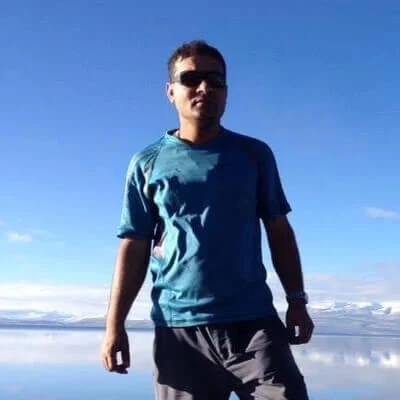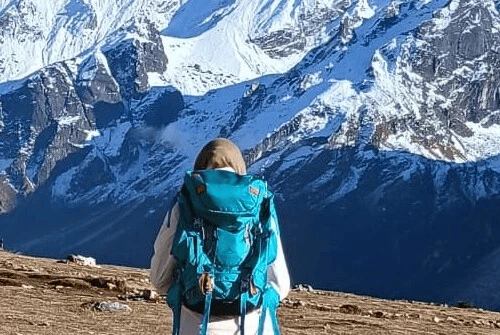Nepal is renowned for its stunning trekking routes, offering something for every adventurer, from beginners to seasoned mountaineers. The difficulty of treks in Nepal varies significantly, depending on factors like altitude, terrain, distance, and trail duration. Understanding these difficulty levels is essential when selecting a trek that matches your experience, fitness, and comfort level.
Here’s a comprehensive breakdown of the different trekking difficulty levels in Nepal to help you choose the right one for your adventure.
Easy Trek: Perfect for Beginners
If you’re new to trekking or have little hiking experience, easy treks are the best option for you. These treks involve gentle walking and are suitable for families, children, and older trekkers. You don’t need to have any special training or prior experience for these treks.
Altitude: Maximum elevation does not exceed 3,499 meters (11,479 feet).
Walking Duration: Around 6 hours per day.
Difficulty: The terrain is mostly flat or mildly undulating, with no significant altitude gain.
Examples:
These treks are ideal for anyone looking to enjoy the natural beauty of Nepal without pushing physical limits. They also carry a minimal risk of Acute Mountain Sickness (AMS), as the altitudes are lower.
Easy to Moderate Trek: For Casual Trekkers in Good Shape
If you have average physical fitness and are comfortable with walking for several hours each day, then easy to moderate treks are a great choice. These treks do not require prior trekking experience, but a basic level of fitness will ensure a smoother experience.
Altitude: The maximum altitude can reach 4,999 meters (16,400 feet).
Walking Duration: About 6 to 7 hours per day.
Difficulty: The terrain is more varied, with some uphill sections, but overall not too strenuous.
Examples:
Annapurna Base Camp Trek
Langtang Valley Trek
While AMS is still unlikely, trekkers may experience some mild discomfort due to the increased altitude. These treks give you a good introduction to trekking in the Himalayas and offer fantastic views of the mountains, valleys, and traditional villages.
Moderate to Difficult Trek: For Experienced Trekkers
A moderate to difficult trek is for trekkers who are in good physical condition and have a bit of experience on longer trails. These treks require a solid fitness level as they involve walking for longer durations and reaching higher altitudes. These treks are ideal for individuals who want a bit more of a challenge.
Altitude: The maximum elevation ranges from 5,000 meters (16,404 feet) to 5,599 meters (18,369 feet).
Walking Duration: Over 7 hours per day.
Difficulty: These treks involve more strenuous walking and higher altitudes, making AMS a possibility, though it remains less common.
Examples:
Annapurna Circuit Trek
Nar Phu Valley Trek
These treks typically take 10-14 days, allowing trekkers to explore deeper into the Himalayas and witness a variety of landscapes, from lush subtropical forests to rugged, high-altitude terrain. Prior experience in trekking at moderate altitudes is recommended to fully enjoy the journey.
Difficult to Challenging Trek: For Seasoned Trekkers
The difficult to challenging treks are the most physically demanding and best suited for experienced trekkers. These treks often involve high altitudes, unpredictable weather, and challenging terrain. They require both mental and physical endurance to complete.
Altitude: Altitudes often exceed 5,000 meters (16,404 feet), with some treks going above 6,000 meters (19,685 feet).
Walking Duration: These treks can involve 7 to 8 hours per day, and on tougher days, even up to 9-10 hours.
Difficulty: The terrain is rough, often involving steep ascents, descents, and long stretches with minimal paths. AMS is a significant risk at higher altitudes, and trekkers must be physically fit and mentally prepared.
Examples:
These treks offer some of the most stunning views in the world, including up-close vistas of towering peaks like Mount Everest, Makalu, and Lhotse. They also take you into remote, untouched regions, providing a true wilderness experience. Prior trekking experience at high altitudes is a must, and trekking with a guide is recommended for safety.
How to Choose the Right Trek for You
When selecting a trek in Nepal, it’s important to choose one that matches your physical fitness, trekking experience, and comfort level with altitude. Here are a few tips to help you decide:
Evaluate Your Fitness Level: If you're relatively fit and active, you can opt for treks with moderate difficulty. If you're new to trekking or prefer an easier experience, choose treks labeled as easy or easy to moderate.
Altitude Considerations: Keep in mind that trekking at high altitudes can lead to AMS, so if you choose a trek above 4,000 meters (13,123 feet), take precautions like acclimatization days, and stay hydrated.
Trekking Experience: If you've done some basic trekking before, you can handle moderate treks. For more challenging treks, prior high-altitude trekking experience or physical training is essential.
Duration of Trek: Some treks, especially moderate and difficult ones, can last more than two weeks. Consider your time constraints and make sure you have enough stamina for long treks.
Weather Conditions: Always consider the season before trekking. The best time to trek is during the spring (March-May) and autumn (September-November) seasons when the weather is clear and stable.
Conclusion
Nepal offers a range of trekking experiences, from easy day hikes to challenging expeditions in the Himalayas. By understanding the different trekking difficulty levels, you can choose an adventure that matches your skill level, fitness, and goals. Whether you're exploring the beautiful Annapurna region, embarking on a high-altitude challenge in the Everest region, or experiencing the remote beauty of the Mustang, Nepal offers unforgettable trekking experiences for adventurers of all kinds.




